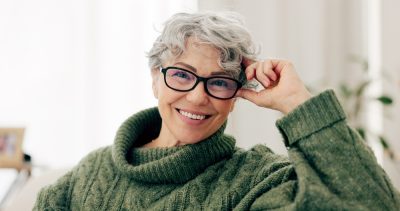Learn All About Timeless Gold Restorations 
Are you wondering whether gold fillings could be the right dental solution for your unique oral health needs? Dental restoration is a nuanced journey, and gold fillings represent a time-honored approach that combines scientific precision with remarkable durability. While modern dentistry offers multiple dental filling options, gold remains a distinguished choice for patients seeking a long-lasting, robust dental solution that has stood the test of time.
At Gulf Gate Dental, our Sarasota dentists offer a wide variety of dental fillings that can help improve and protect your oral health. To learn more about the dental filling options at Gulf Gate Dental, contact our Greater Tampa Bay Area dental practice today by calling (941) 921-2122.
What Are Gold Fillings?
Gold fillings, also known as gold inlays or onlays, are a specialized dental restoration technique used to repair teeth damaged by decay or trauma. Composed of a precise mixture of gold and other metals like silver, copper, and platinum, these fillings offer a unique approach to dental restoration. Gold fillings have a long-standing history in dental practice, providing patients with a durable and reliable treatment option.
Benefits of Gold Fillings
Several advantages make gold fillings a notable dental restoration choice:
- Durability: Gold is exceptionally resilient and capable of withstanding years of intense chewing and biting forces.
- Biocompatibility: The material is highly tolerated by the human body, minimizing the risk of allergic reactions.
- Longevity: With proper care, gold fillings can remain functional for 15 to 30 years, often outlasting alternative filling materials.
- Tooth Sensitivity: Gold dental fillings typically cause less post-treatment sensitivity compared to other dental filling options.
- Precision Fit: Custom-fabricated to match tooth contours, gold fillings provide an exceptional seal against decay.
- Minimal Shrinkage: Unlike some materials, gold fillings maintain their shape, reducing the risk of microleakage.
- Strength: Particularly effective for posterior teeth experiencing significant biting pressures.
- Corrosion Resistance: Gold doesn’t corrode or tarnish, ensuring long-term restoration integrity.
Disadvantages of Gold Fillings
Potential drawbacks include:
- Aesthetic Limitations: The distinctive gold color makes these fillings visually noticeable.
- Higher Cost: Gold’s precious metal status contributes to increased pricing.
- Multiple Appointments: The process requires several dental visits for proper fabrication and placement.
- Potential Allergic Reactions: Rare instances of sensitivity to gold or associated metals.
- Tooth Structure Considerations: Placing fillings made from gold alloys may require more tooth structure removal compared to alternative materials.
- Color Matching Challenges: Difficulty maintaining visual consistency with existing dental work.
The Gold Dental Filling Process
The process of getting a gold dental filling involves several carefully executed steps to ensure a precise, long-lasting restoration. Here’s a detailed breakdown of what you can expect:
Diagnosis and Treatment Planning
Your dentist will begin by thoroughly examining your tooth and assessing the extent of damage or decay. They will use dental instruments and possibly X-rays to determine if a gold filling is the most appropriate treatment option. If a gold dental filling is recommended, your dentist will create a customized treatment plan tailored to your specific needs.
Tooth Preparation
Once the treatment plan is established, your dentist will prepare your tooth for the gold dental filling. This step typically involves:
- Administering local anesthesia to ensure your comfort throughout the procedure.
- Carefully removing the decayed or damaged portion of the tooth using specialized dental instruments.
- Shaping the cavity to create an ideal foundation for the gold filling.
Impression Taking
After preparing the tooth, your dentist will take a precise impression of the prepared cavity. This step is crucial for creating a custom-fitted gold filling that matches the exact contours of your tooth. The impression may be taken using traditional dental putty or advanced digital scanning technology.
Filling Fabrication
The impression of your tooth is then sent to a dental laboratory where skilled technicians will fabricate your gold filling. Using the impression as a guide, they will create a filling that perfectly matches the dimensions and shape of your prepared tooth. This process may take a few days to complete.
Fitting and Cementing
Once your custom gold filling is ready, you’ll return to the dentist’s office for the placement procedure. Your dentist will:
- Ensure the gold filling fits perfectly into the prepared cavity.
- Apply a special dental cement to both the interior of the cavity and the filling.
- Carefully place the gold filling into position and secure it firmly.
Polishing and Adjustments
The final step in the process involves refining and perfecting your new gold filling:
- Any excess cement will be removed from around the filling.
- Your dentist will check your bite to ensure the filling feels natural and comfortable.
- The filling will be polished to create a smooth surface.
- If necessary, your dentist will make final adjustments to ensure proper alignment and function.
Gold Filling Costs
Gold fillings typically cost between $250 and $2,000 per tooth. This wide range reflects the variability in several key factors that influence the final price.
Influence of Gold Market Values
The cost of gold fillings is directly tied to the current market price of gold. As a precious metal, gold’s value fluctuates daily in global markets. When gold prices are high, the cost of gold fillings increases accordingly. Conversely, when gold prices drop, fillings may become slightly more affordable.
Impact of Filling Size
The size of the filling plays a crucial role in determining its cost. Larger cavities require more gold material, which naturally increases the overall price. A small filling on a front tooth might be on the lower end of the price range, while a large filling on a molar could approach the upper limit.
Tooth Location Considerations
The position of the tooth in your mouth also affects the cost. Fillings on easily accessible front teeth are generally less expensive because they are easier for the dentist to work on. Molars and other hard-to-reach teeth may require more time and skill to fill, resulting in higher costs.
Additional Cost Factors
While not mentioned in the original statement, it’s worth noting that other factors can influence the final price:
- Dentist’s Expertise and Location: More experienced dentists or those in high-cost areas may charge more for gold fillings.
- Complexity of the Procedure: If additional work is required, such as removing an old filling or treating deep decay, the cost may increase.
- Insurance Coverage: Some dental insurance plans may cover a portion of the cost, potentially reducing out-of-pocket expenses.
Long-Term Value Consideration
Despite the higher upfront cost compared to other dental filling materials, gold fillings are known for their durability and longevity. They can last for decades with proper care, potentially making them a cost-effective choice in the long run.
Frequently Asked Questions
Yes, gold fillings have a decades-long track record of safety and effectiveness. They are biocompatible, meaning they are unlikely to cause allergic reactions or adverse effects in most patients. Additionally, gold fillings are highly durable and resistant to wear, making them a reliable choice for dental restorations.
While it is technically possible to place a gold filling in a front tooth, aesthetic concerns often lead patients to explore alternative options. Many individuals prefer tooth-colored filling materials, such as composite resin or porcelain, for visible areas to maintain a natural appearance. Ultimately, the choice depends on personal preference and the specific dental situation.
Yes, gold fillings can be removed if necessary, although the process should be performed by a qualified dentist. In some cases, replacing the gold filling with another type of restoration may be recommended to address underlying issues or improve aesthetics. It’s important to consult with your dentist to determine the best course of action based on your individual needs.
Restore Your Oral Health at Gulf Gate Dental, Call Today!
Need a dental restoration? Our team serves Sarasota and surrounding areas including Fruitville, Bradenton, and South Sarasota. Dr. Michael P. Ryan and Dr. Collin S. Ryan are ready to evaluate your oral health and recommend the most suitable treatment. Contact Gulf Gate Dental today by dialing (941) 921-2122 to schedule your comprehensive dental consultation!




